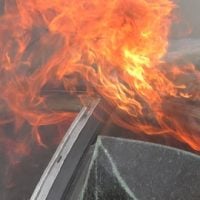
Burns may not be the first type of injuries that come to mind in a car accident case, as you expect more victims would suffer from broken bones, traumatic brain injury, whiplash, and injuries to internal organs. However, burn injuries are more common than you think: According to the American Burn Association, there were 310 fatalities due to vehicle crash fires in 2016. Unfortunately, burn injuries are also among the most traumatic and devastating for a victim. Beyond the agonizing pain, there is the potential for severe scarring and disfigurement. Surgery, including skin grafting, is often necessary and emotional distress may be extreme. If you suffered burn injuries in a Florida auto collision, here are some of the basics you need to know.
Sources of Burn Injuries in a Car Accident
Burns may be the result of different factors in a motor vehicle, such as:
- Flames or hot surfaces may cause heat burns when the body is in close proximity or direct contact;
- Electricity from the vehicle’s systems can cause a shock, leading to burns as the current flows through the body; and,
- Chemical burns, if a vehicle is carrying or leaks a hazardous substance.
Classification of Burn Injuries
Medical professionals have developed a system for classifying burn injuries by severity. University of Florida Health describes these classifications as:
- First Degree: This type of burn is minor, affecting only the epidermis, the external layer of skin; an example is a sunburn. The skin is red and sensitive, but should heal completely within 3-5 days without medical attention.
- Second Degree: The severity of a second degree burn depends upon the width and part of the body. These burns are considered “major” if they penetrate the skin in an area 2-3 inches wide or impact the hands, feet, groin, or joints. Second degree burns are considered partial thickness because they damage the epidermis and dermis, leaving blisters and redness. Surgery may be necessary, including skin grafts and procedures to repair damaged nerve tissue.
- Third Degree: Extensive medical care is required for a full thickness third degree burn, which destroys the epidermis and chars the dermis. Interestingly, the pain may not be as severe because nerve tissue is damaged and the victim does not experience sensation. Third degree burns usually require numerous skin graft procedures over time, but these surgeries may not completely repair the damaged tissues. Permanent scarring and disfigurement is common.
Schedule a Consultation with a Skilled Florida Car Accident Lawyer Right Away
Burn injuries from a motor vehicle crash can range from minor to life-threatening, or even fatal. The medical care required to treat burns is extensive and costly, and many victims are still left with scars. Plus, the emotional impact of disfigurement often requires psychological treatment. If you were in a car accident and sustained burn injuries, it is important to talk to a lawyer about your options. Our attorneys at Piccin & Glynn have the experienced and legal knowledge to get the compensation you deserve for your medical costs, lost wages, and pain and suffering. Please call our Ocala, FL office today at 352-558-8480 to schedule your free consultation.
Resource:
ameriburn.org/who-we-are/media/burn-incidence-fact-sheet/

